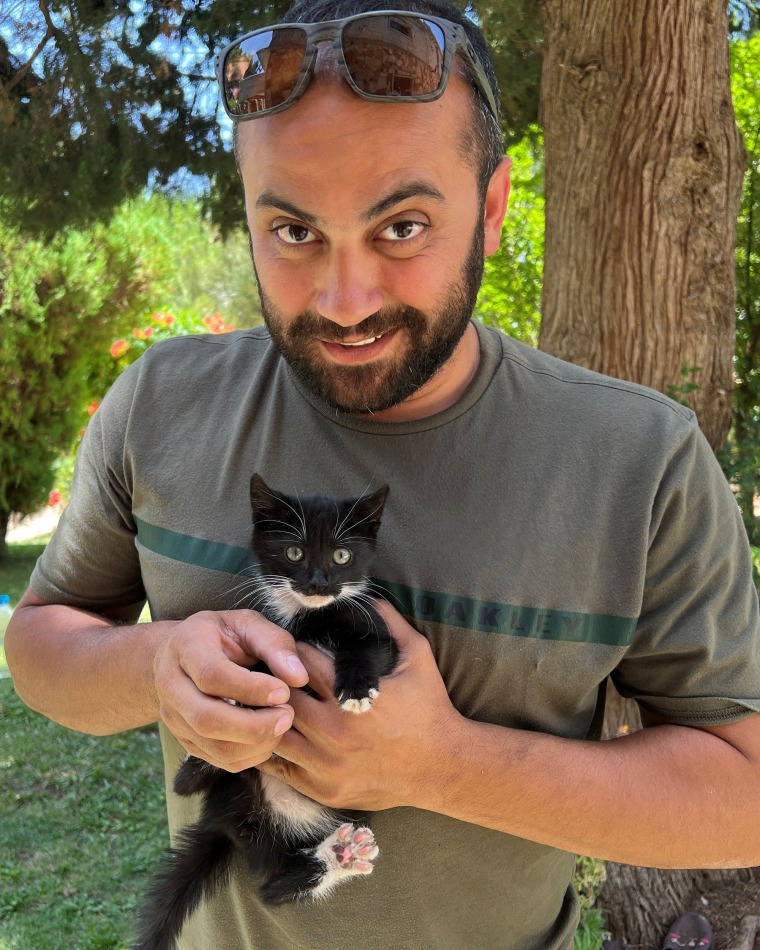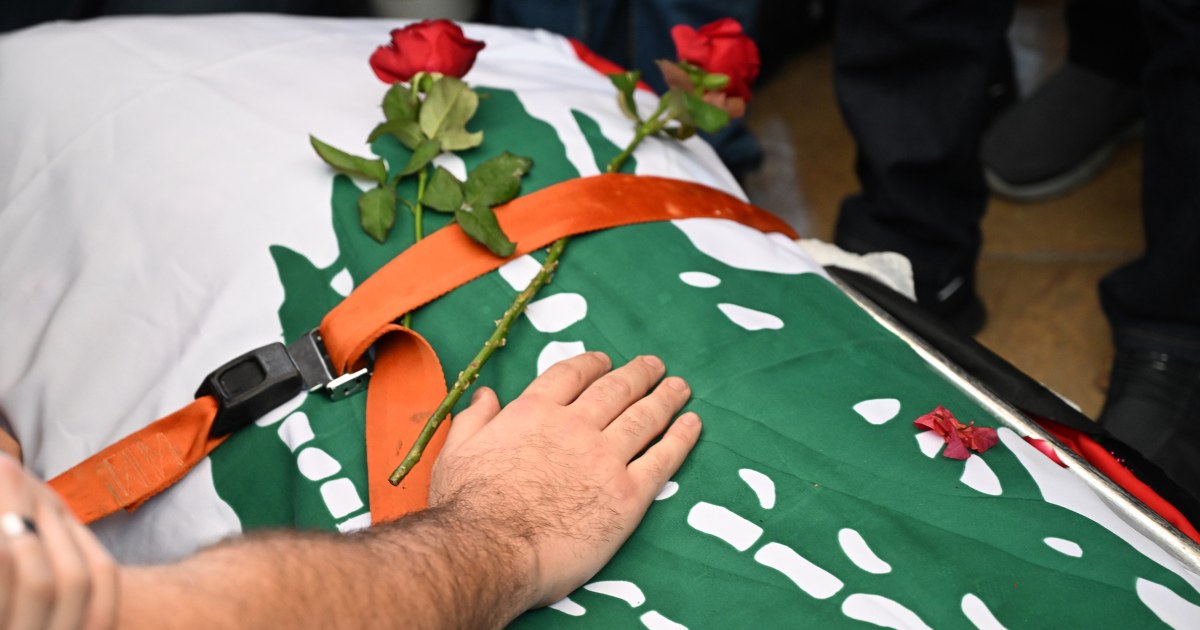JERUSALEM — Almost 12 months of unbridled war, death, destruction and suffering in Gaza have proved the deadliest conflict on record for journalists. One year in, NBC News has spoken to 21 media professionals and organizations in the region who described killings, attacks and arrests by Israeli forces.
As of Aug. 31, 116 journalists had been killed since Oct. 7, according to statistics from the Committee to Protect Journalists, a nonprofit based in New York. The majority, 111, were Palestinians killed in Gaza, three were Lebanese and two were Israeli journalists killed by Hamas militants on Oct. 7. Another 35 have been injured. Other monitoring groups have compiled far higher figures.
The Israeli military has said it “takes all operationally feasible measures to mitigate harm to civilians including journalists” and “it does not deliberately shoot at civilians, including journalists.”
But based on their personal experiences in the field or managing colleagues from outside Gaza, some journalists have come to believe that Israel is targeting media workers.
Among them are Christina Assi and Dylan Collins, who were wounded by shellfire on Oct. 13 while covering cross-border clashes between the Israeli army and armed groups near the village of Alma Al-Chab, in southern Lebanon.
Reuters journalist Issam Abdallah, 37, was killed instantly in the same strikes, which came just over 30 seconds apart. Condemning his killing, Reuters Editor-in-Chief Alessandra Galloni said the evidence “shows that an Israeli tank crew killed our colleague.”

Assi told NBC News last month that she “immediately lost sensation in my legs so I started screaming for help.” She added that Collins “rushed over to help me, and then seconds later, we were attacked again.”
Assi, a photographer with the Agence France Presse (AFP) news agency, had to have her right leg amputated.
Reports from Amnesty International, Human Rights Watch and other rights groups, as well as an in-depth investigation into the strikes by the AFP, all concluded that the group had likely been targeted.
“Video evidence, expert audio analysis, and witness accounts suggest that the group was visible to the cameras of a nearby unmanned aerial vehicle (UAV) that was most likely Israeli, within line of sight of five Israeli surveillance towers, and most likely targeted by at least one munition fired from the main gun of a tank from an Israeli military position approximately 1.5 km (just under a mile) southeast,” Human Rights Watch said in a report.
Amnesty International said it should be investigated as a “war crime.” In its report it said it had not found “any indication that there were any fighters or military objectives at the site of the strikes, raising concerns that these strikes were likely direct attacks on civilians.”
Assi said she believed they “were targeted” because they were journalists.
Collins, a videographer with the AFP, agreed with her assessment.
He said the group of journalists had been in position for about an hour before the attack, all of them wearing helmets and bulletproof vests marked with the word “press.” Their car was marked with “TV,” he added.
“We were visible to multiple Israeli watchtowers,” he said. “There were drones circling us the entire time.”
“It was two strikes, 37 seconds apart from the same direction, and followed by nearly two minutes of sporadic bursts of 50 caliber weapon fire,” he said. “So that’s not just a targeted attack. It’s a sustained targeted attack against a group of journalists that I think was clearly intended not just to scare people away, not just to kill one person, but to kill all of us.”
The Israel Defense Forces told NBC News that the strike was in response to Hezbollah fire.
Unlike Assi and Collins, many other journalists covering the story did not survive. The majority were killed in Gaza, including Al Jazeera’s Ismail Al-Ghoul and his freelance cameraman Rami Al Refee, both 27. The pair were on assignment in northern Gaza when their car was struck by an Israeli drone on July 31.
In a statement to NBC News last month, the IDF said Al-Ghoul was a “Hamas Nukhba terrorist who took part in the October 7th massacre and worked as a journalist for the Al Jazeera channel for the past few months.”
The IDF also released a screenshot of a list of names that dates to 2021. It said was “found on Hamas computers seized in the Gaza Strip,” suggesting Al-Ghoul “was an engineer in the Hamas Gaza brigade.” The screenshot showed that Al-Ghoul received a military rank on 1 July, 2007, when he was 10-years-old. Another column on the list shows that he was recruited in 2014. NBC News has reached out to the IDF for comment on the discrepancy.
In a strongly worded statement shortly after the attack, Al Jazeera called the claim “baseless” adding that it highlighted “Israel’s long history of fabrications and false evidence used to cover up its heinous crimes.” Al-Ghoul was mentioned in memoriam at the News and Documentary Emmy Award competition on Wednesday.
Jodie Ginsberg, the CEO of the Committee to Protect Journalists, said that her organization had identified a similar pattern after the deaths of other members of the media.
“Israel follows a familiar path whenever a journalist is killed in this way,” she said. “Often, initially they deny having killed the individual at all, then they will accuse the journalist of having either been a terrorist or engaged in militant activity.”
She added that the CPJ had been keeping records “for more than 30 years, and it’s the deadliest period ever for journalists.”
Walid al-Omari, Al Jazeera’s bureau chief in the occupied West Bank, said in an interview last month that Israel had allowed several of his correspondents to leave Gaza after accusing them of being a member of Hamas.
Speaking from the bureau in Ramallah, he said, “If he was from Hamas, as they say in their accusations, then why did they let him go?”
“Since the first day of this war, we have counted the cost under this unbearable situation,” he added. “Five times I have to declare on TV that one of our colleagues or his family was killed in this war.”
Wael Al-Dahdouh, the network’s correspondent in Gaza, has lost five close family members including his son Hamza, who also worked for the network. He was killed in an Israeli airstrike in January, alongside freelance reporter Mustafa Thuraya.
In a statement to NBC News, the IDF said, “The IDF considers the freedom of the press to be of utmost importance while clarifying that given the ongoing exchanges of fire, remaining in an active combat zone has inherent risks.”
“The IDF will continue to counter threats while persisting to mitigate harm to civilians,” it added.
On Sunday, armed Israeli troops raided al-Omari’s offices in Ramallah ordering the office to be shut for 45 days, alleging without providing evidence that the newsroom was “being used to incite terror.” Denouncing Israel’s claim as “unfounded,” Al Jazeera continued to broadcast from Jordan.
It followed an order issued in May that saw Israeli police raid Al Jazeera’s broadcast position in East Jerusalem, seizing equipment there, preventing its broadcasts in Israel and blocking its websites. It was the first time Israel has ever shuttered a foreign news outlet operating in the country.
“We finally are able to stop Al Jazeera’s well-oiled incitement machine that harms the security of the country,” Israeli Communication Minister Shlomo Karhi said after the raid.
Amid regular displacement and near-constant bombardment, for some the risk of covering a war became too high.
After sending her children to live in Egypt, Noor Harazeen stayed behind in Gaza to cover the war for the China Global Television Network, losing friends and colleagues as the fighting raged.
“The thing is no one is safe in Gaza,” she said last month when asked if she thought Israel was deliberately targeting journalists in Gaza. “It doesn’t matter if you’re a man, a woman, a child, if you’re a militant fighter, if you’re a civilian, if you’re a doctor, a journalist … As long as you’re in Gaza, you can get targeted.”
Health officials in Gaza say more than 41,000 people have been killed in Gaza since Hamas Oct. 7 terror attacks on Israel, in which about 1,200 people were killed and 250 people taken hostage, according to Israeli tallies.
And each time a media worker leaves they cannot be replaced, as Israel has blocked Israeli and international journalists from entering Gaza unless they are accompanied by the Israeli military — unprecedented in war coverage and a move widely criticized by news organizations worldwide.
Yarden Michaeli, an editor at Israel’s Haaretz newspaper, said that his country “wouldn’t be interested in getting entangled in a scandal,” if one of those journalists died. But he said that as a result of the ban “we’re getting a very diluted version of reality” and missing out on “a lot of information.”
The IDF did not respond when NBC News asked when would foreign journalists be allowed into Gaza, but David Mencer, a spokesperson for Israeli Prime Minister Benjamin Netanyahu’s office, defended the policy in an August interview with British broadcaster Sky News. He said that the enclave was “a very dangerous war zone” and Israel was keeping media workers out for their safety.
A tearful Harazeen said that, although her children were safe, she was “not happy” to be away from her home in Gaza and vowed to return one day.
“I miss everything about my old life,” she said.
Christina Assi still has months of therapy and pain in her long road of recovery, but she too has vowed to return to work.
“They’re trying to silence the journalists,” she said. “They don’t want journalists to do their work.”
But, she added, “We can still speak and do the interviews and be the voice of the voiceless.”

Leave a Reply